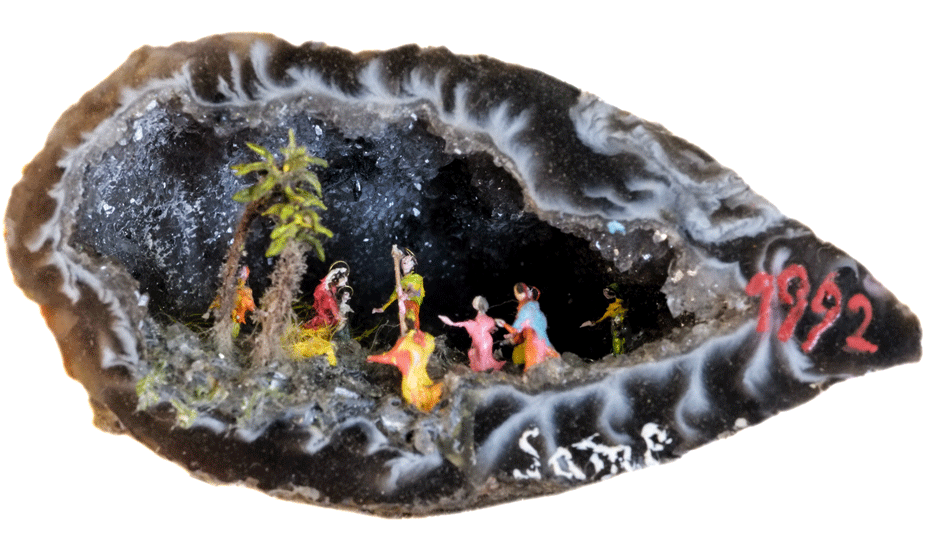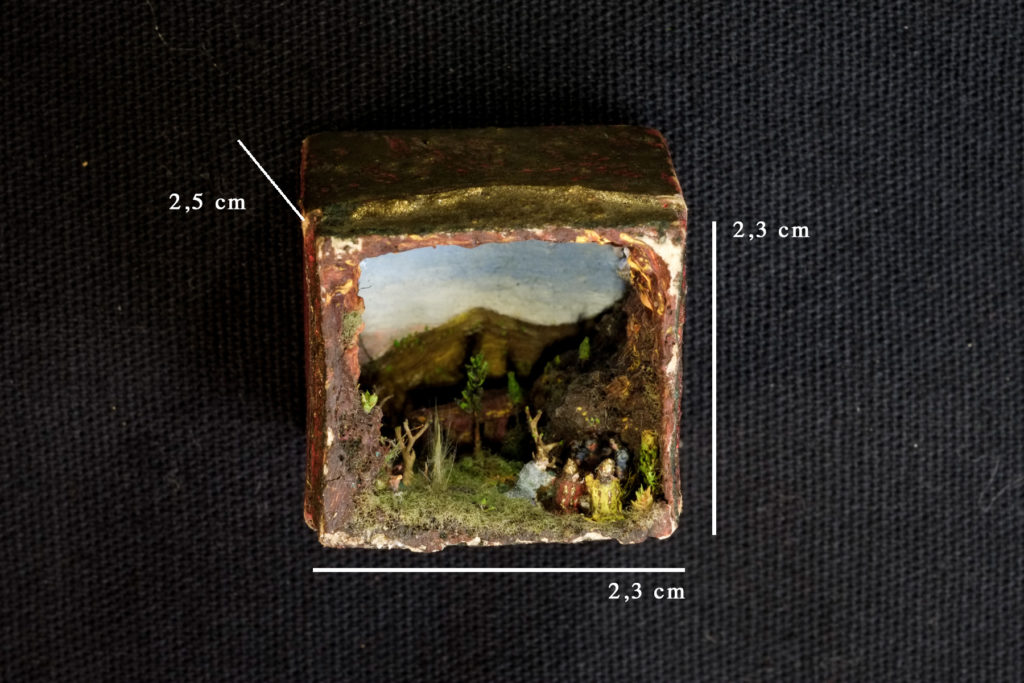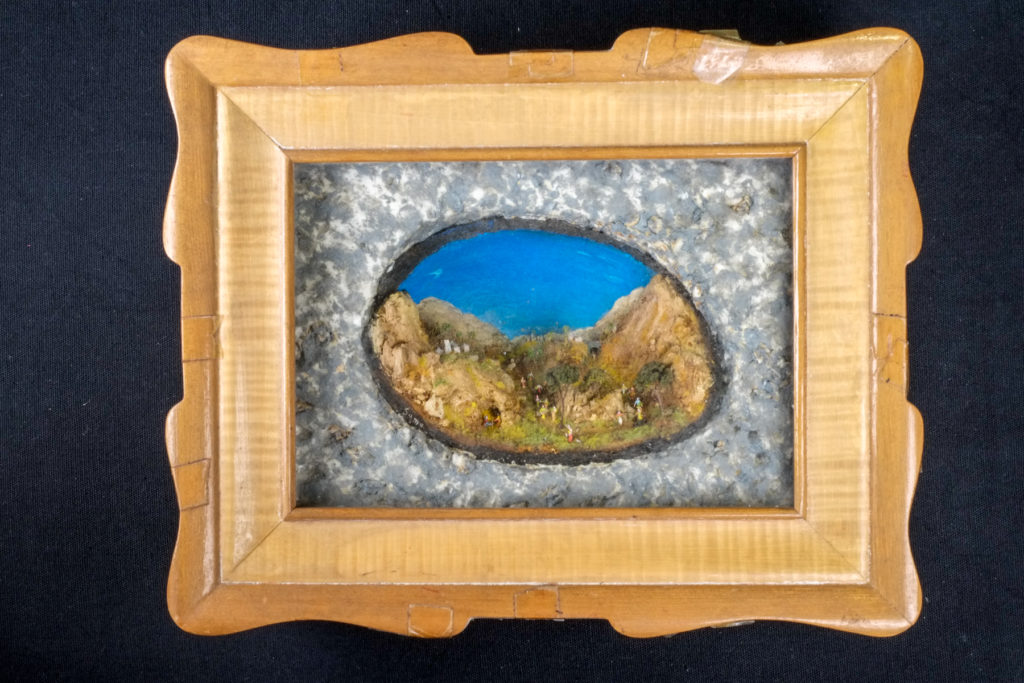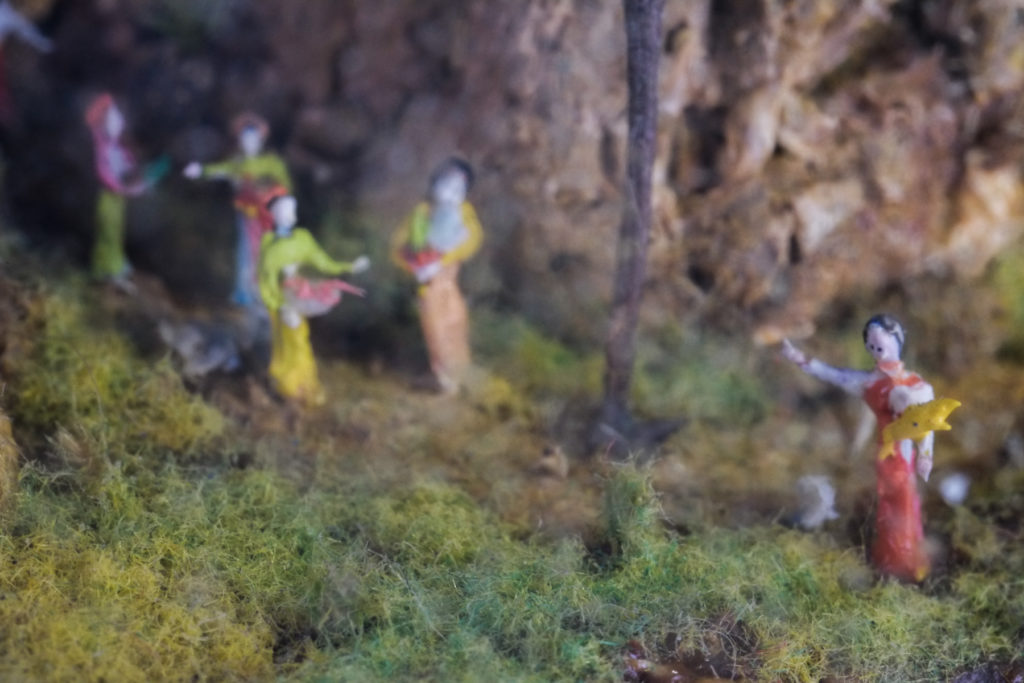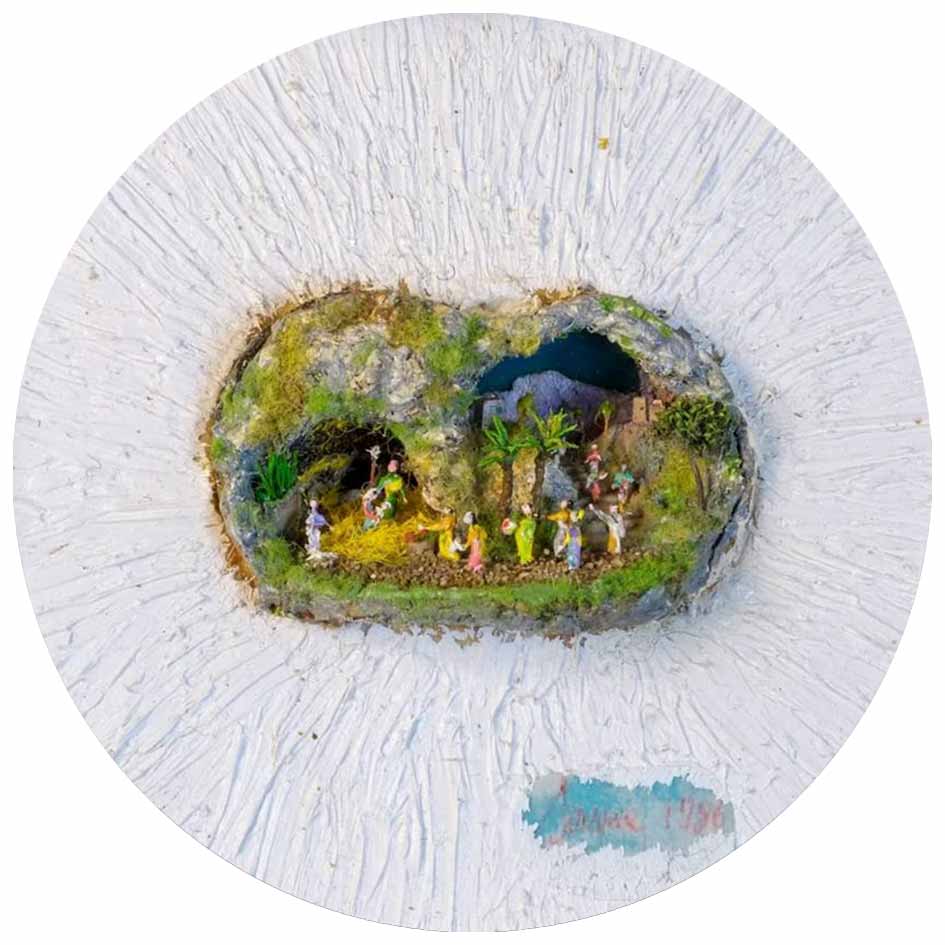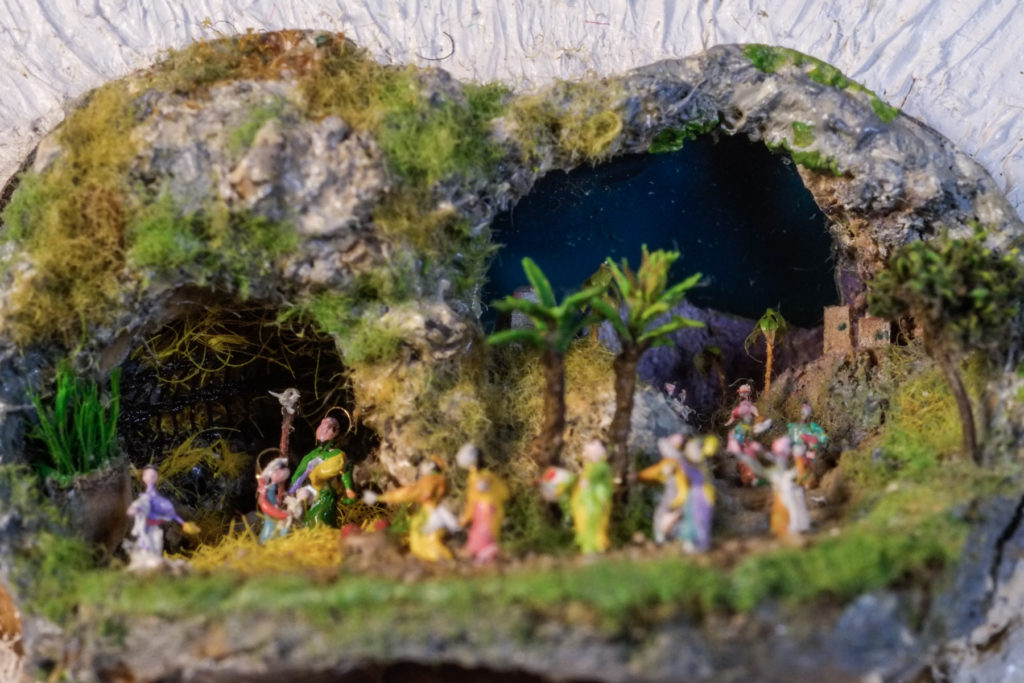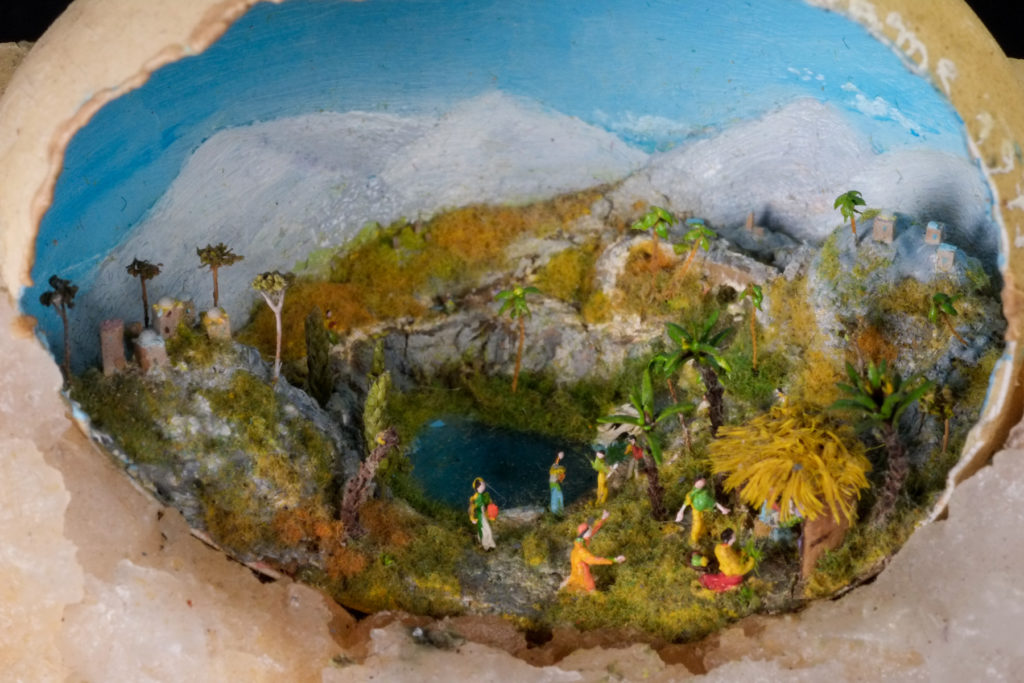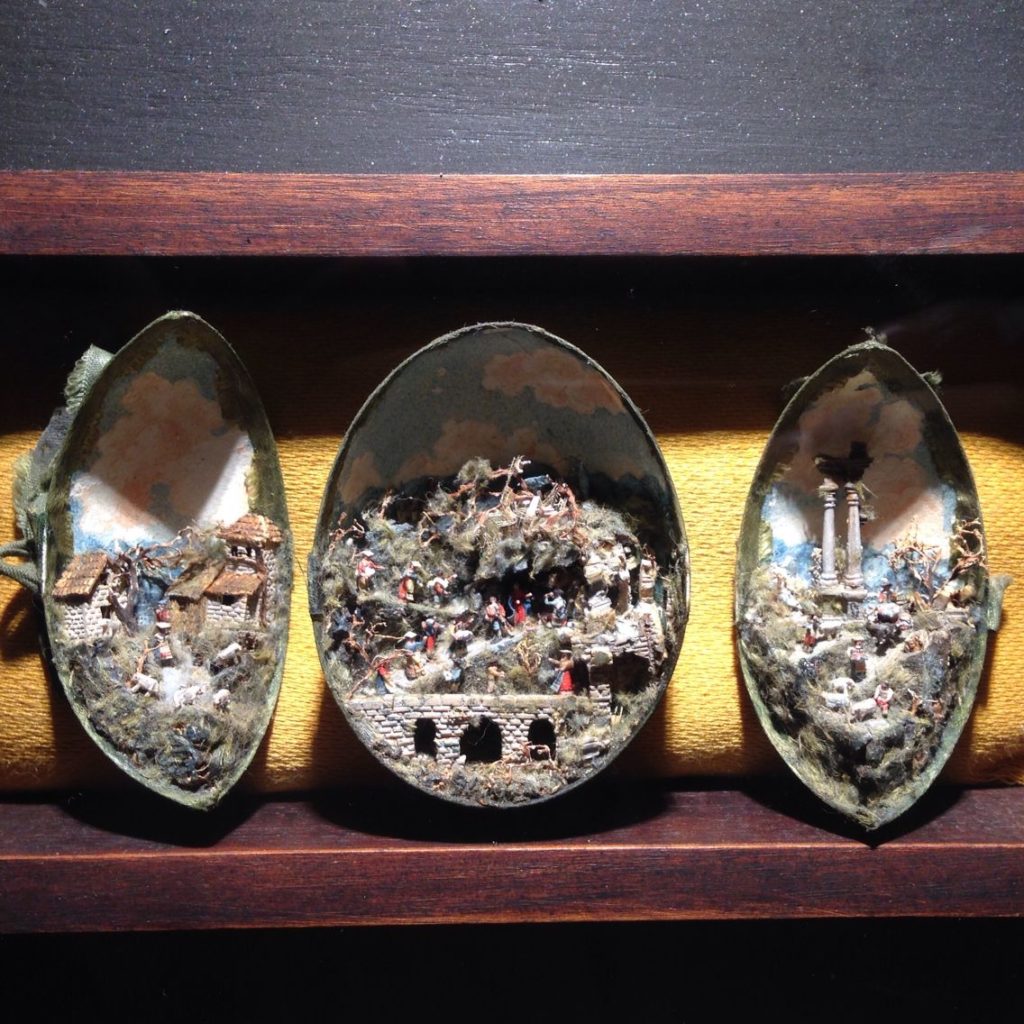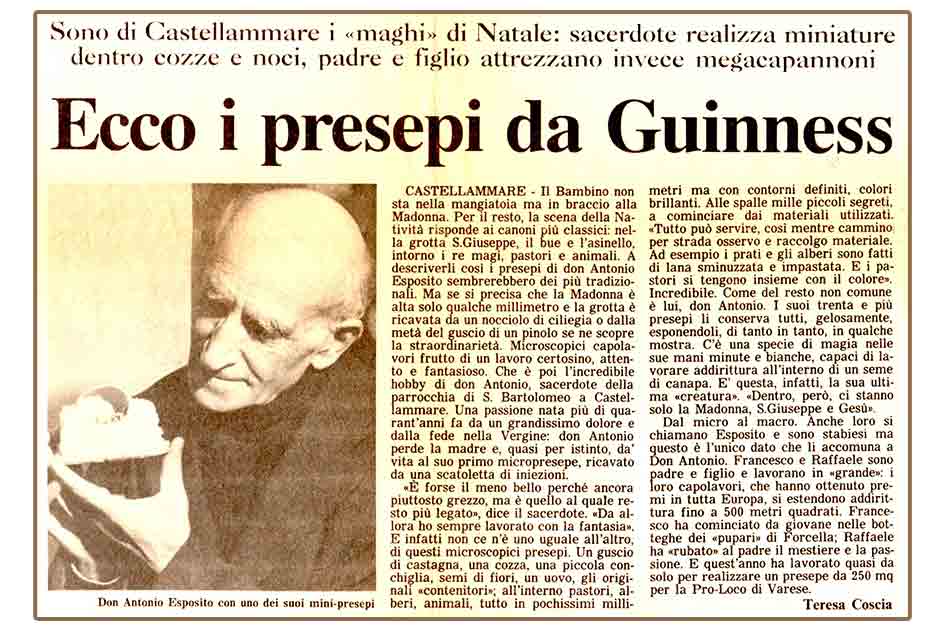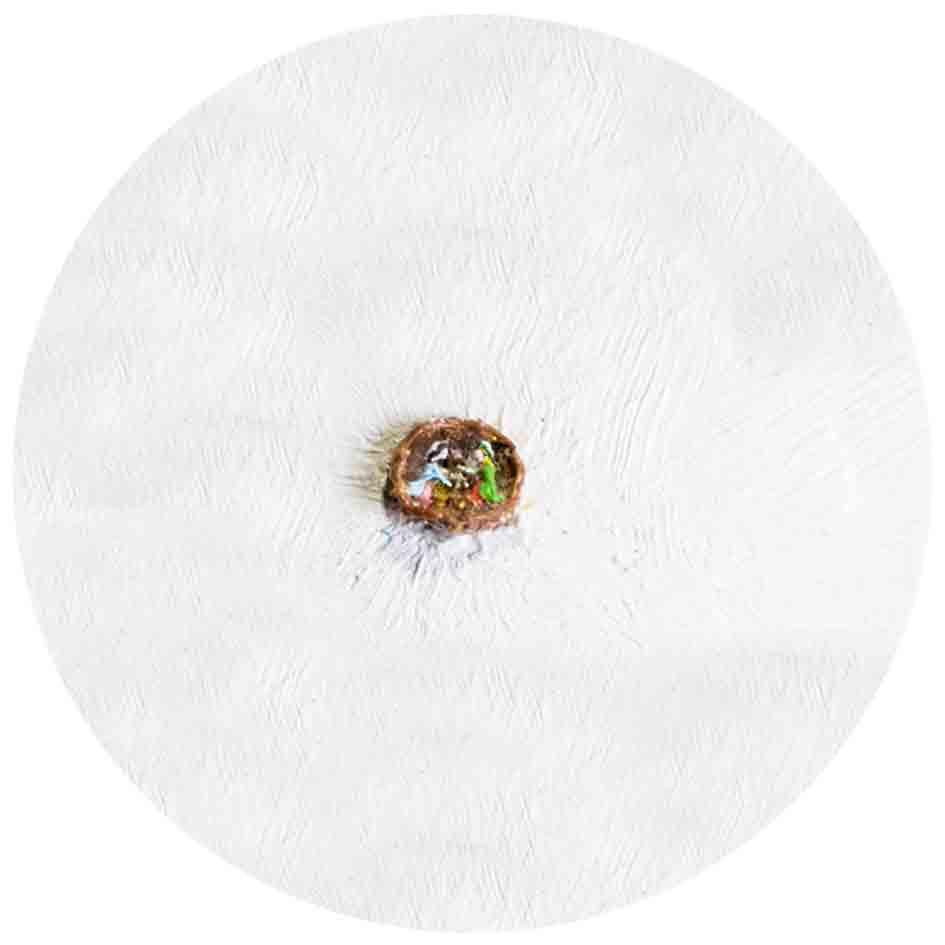The smallest Nativities in the world
the Nativities of the Same Collection
the Nativities of the Same Collection
»How grief gave birth to an artist
1942 in Castellammare di Stabia, a small town near Naples. A young man of twenty-three, feeling a religious vocation, enters the seminar. His name is Antonio Maria Esposito. Hard times, the War here is particulary tough. Some months later, his beloved mother dies. The painful spiritual crisis that follows the grief seems endless. And yet, it will be the starting point of a journey through art and beauty that will last for all his life. In a small box of medicine from his mother’s he creates his first, tiny Nativity: a tender homage to the Virgin and to his dear mom. This work helps him find again his soul peace and is at the same time the first step as a real artist of miniature. Along half a century, he will create a Nativity every year, inventing new techniques to make them smaller and smaller.
»A novelty in the history of miniature
Don Antonio invented a peculiar technique to create his tiny works. The higher characters are 5 mm, the smaller is the Child contained in the seed of hemp (1.2 mm). Bodies were made with thin drops of oil painting, left to dry for two months, until they reached the consistency to be carved. To chisel the shapes of the bodies Don Antonio would use surgery lancets and tweezers but sometimes he arrived to the point of building his own tools. A sort of stone-cutter of his own invention can be seen in the Museodivino, along with his personal magnifying glass. As far as we know, the use of pure painting, with no inner structure to sustain the shapes of human bodies, has no precedents in the history of miniature. More than this, the heads of the tiny people are created with an unbelievable natural element: a grain of pear pulp. Our artist managed to paint on these grains eyes, noses and mouths, using a brush with just one hair. Most of these details can be seen only with photographic enlargements. Landscapes are made with natural elements: twigs, leaflets, pistils, gems, moss… immerged in trementine so that they could be preserved in time.
»A novelty in the history of miniature
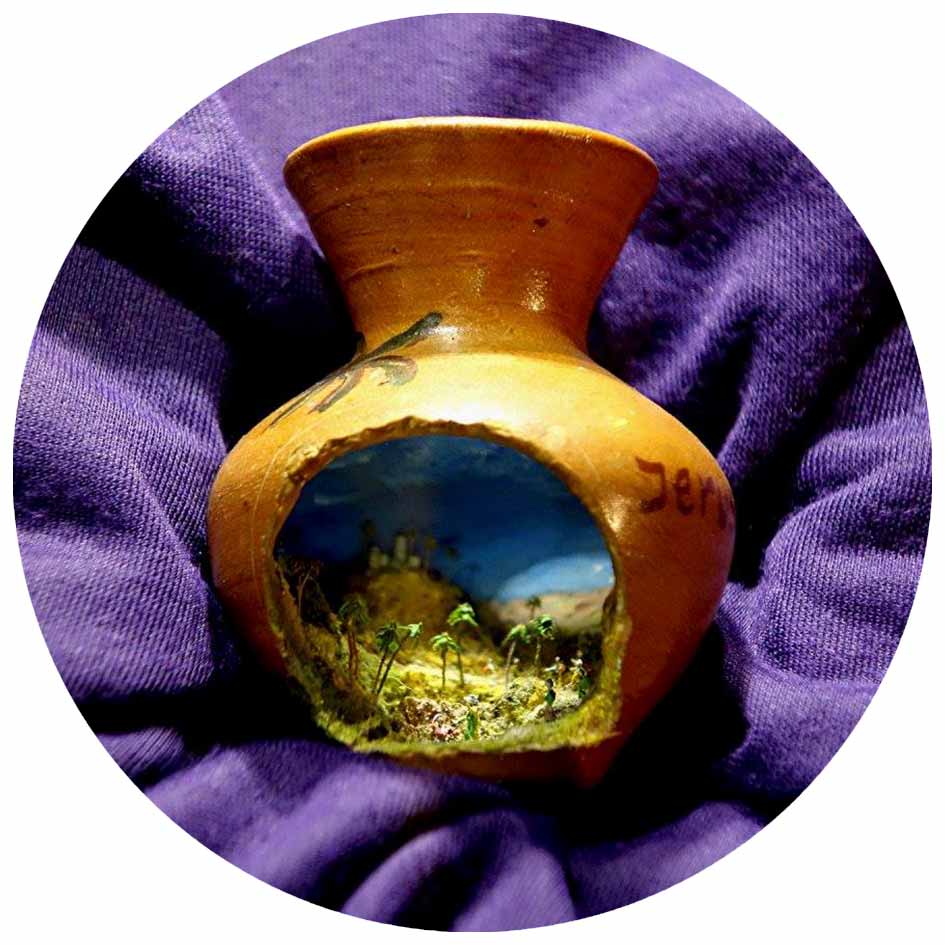
Don Antonio invented a peculiar technique to create his tiny works. The higher characters are 5 mm, the smaller is the Child contained in the seed of hemp (1.2 mm). Bodies were made with thin drops of oil painting, left to dry for two months, until they reached the consistency to be carved. To chisel the shapes of the bodies Don Antonio would use surgery lancets and tweezers but sometimes he arrived to the point of building his own tools. A sort of stone-cutter of his own invention can be seen in the Museodivino, along with his personal magnifying glass. As far as we know, the use of pure painting, with no inner structure to sustain the shapes of human bodies, has no precedents in the history of miniature. More than this, the heads of the tiny people are created with an unbelievable natural element: a grain of pear pulp. Our artist managed to paint on these grains eyes, noses and mouths, using a brush with just one hair. Most of these details can be seen only with photographic enlargements. Landscapes are made with natural elements: twigs, leaflets, pistils, gems, moss… immerged in trementine so that they could be preserved in time.
»Not all the Nativities from Naples are Neapolitan Nativities
Naples=Nativity
Nativity=Naples
Here is a recognized truth in the history of Nativity!
But, be careful: not all the nativities from Naples are Neapolitan nativities … and not all the Neapolitan nativities are made in Naples. That’s because between the 17th and the 18th century a new philosophy of nativity arose in Naples an this gave birth to the true Neapolitan nativity. Today, in this kind of Nativity, we can find two different styles: the popular Neapolitan nativity and the refined Neapolitan nativity. Many people wrote about this topic, and we don’t have enough space to talk about it here. But the questions remain: are the nativities by Don Antonio Neapolitan nativities? Are they popular or refined Nativities? Or are they created in Naples without being Neapolitan nativities? What is the difference? What’s the bigger meaning of such distictions?
opera n°3
Nativity in an eggshell built on a salt base. The egg and the salt are evangelical symbols. This nativity was inspirated by a popular artwork: a nativity in an eggshell from the 18th century, on display in the San Martino Museum in Naples. You can see it belowThe two nativities have a very different style. Don Antonio’s artwork is set in the Middle East, as you can see from the palm trees and the shape of the tiny houses: it is a “small” difference, but it may change the deep meaning of the Nativity itself!
»The most precious one: a Nativity at the Vatican
In 1992, Pope John Paul II visited Castellammare di Stabia. On that occasion, Don Antonio decided to honor the Pope by giving him one of his nativities. Usually very shy and reluctant to show his works, in the picture he shows a timid smile while he offers his creation to the Pope. Today Don Antonio’s nativity, contained in a black quartz geode, is still in the Vatican. Its matching nativity, contained in the other half of the geode, is on display at Museodivino in Naples.
Opera n°4
This is perhaps the simplest of Don Antonio’s nativities. The black quartz acts as a background and a frame. There are “only” two palms and nine characters: no landscape, no stunning details, no special perspective or secret holes. In other words, no displaying of technical ability. The greatest beauty of this artwork appears as soon as we light it up and the quartz becomes a suggestive starry night above the characters..
»The most precious one: a Nativity at the Vatican
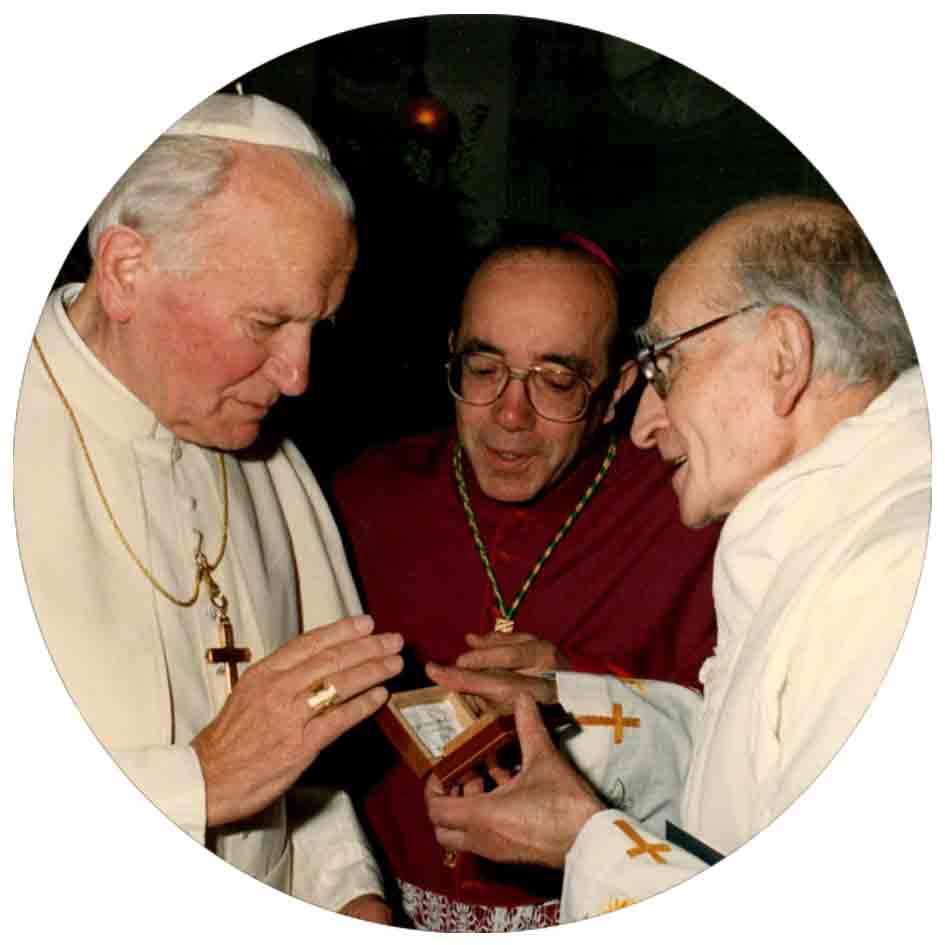
In 1992, Pope John Paul II visited Castellammare di Stabia. On that occasion, Don Antonio decided to honor the Pope by giving him one of his nativities. Usually very shy and reluctant to show his works, in the picture he shows a timid smile while he offers his creation to the Pope. Today Don Antonio’s nativity, contained in a black quartz geode, is still in the Vatican. Its matching nativity, contained in the other half of the geode, is on display at Museodivino in Naples
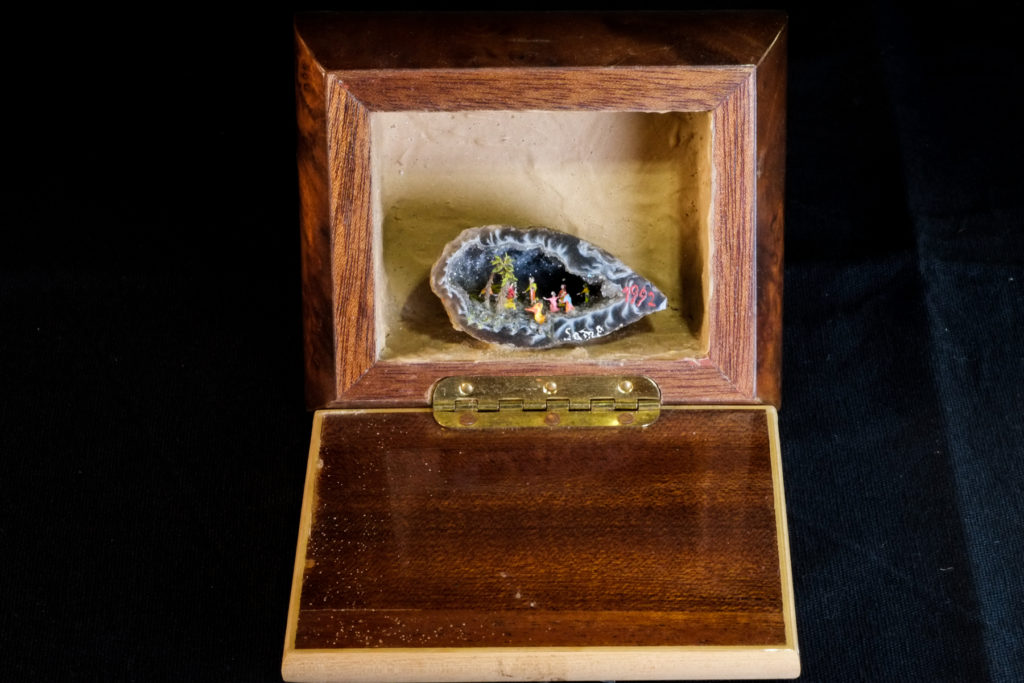
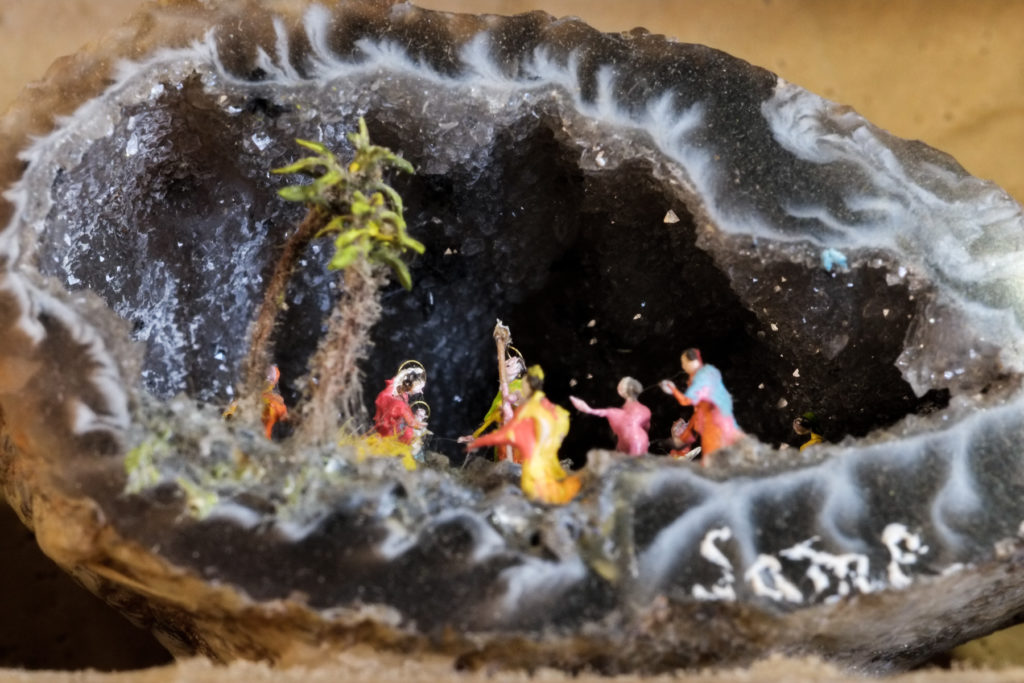
Opera n°4
This is perhaps the simplest of Don Antonio’s nativities. The black quartz acts as a background and a frame. There are “only” two palms and nine characters: no landscape, no stunning details, no special perspective or secret holes. In other words, no displaying of technical ability. The greatest beauty of this artwork appears as soon as we light it up and the quartz becomes a suggestive starry night above the characters.
»The smallest one: the seed of hemp
In 1988, a famous Neapolitan newspaper published an article named “Here are the Guinness Nativities”. On the foreground, a picture of Don Antonio amiably smilig while looking at one of his nativities. A few words on his story, many praises for his creations, no mention of the Divine Comedy. Any projects? A seed of hemp that could contain the Nativity. Such a title might have been a joke, but thirty years later, as the newspaper had predicted, the nativity in the seed of hemp was nominated for the Guinnes World Record. On the “Same Collection” page we tell in detail why the result of the Guinness World Record Committee is still uncertain. But our visitors won’t care that much! The strongest of magnifying glass will help you see all the incredible details of the three sculptures contained in the seed of hemp: Joseph’s hat and hair, Mary’s veil, the Child’s golden halo.
»Secrets: details, hidden passages, meanings
The nativities in the Same Collection are full of secrets. Dan Brown’s fans, anyway, will be disappointed! No esoterism, no mistery, ho hermetism: here secrets are more like nice jokes, an invitation to look more closely to discover new details. Do you want to play? When you’re here, make sure you find…
the white angel
The hidden town
the running light
the vulcan’s soil
the man standing on one leg
the tiny eyeglasses
»"We've been enchanted": toward a permanent exhibition
After the first complete display the Nativity scenes, the temporary exhibition “I Presepi da Guinness” has given for some years the opportunity to access the Same Collection during Christmas time. The enthusiasm and the unanimous applause of all visitors have strengthened the project Museodivino for the enhancement and conservation of these tiny works of art otherwise destined to oblivion. Now finally the complete Same Collection – not only the Nativities but also the Divine Comedy in a nutshell – is visible in Naples every day. We thank our “enchanted travellers “, which over the years have supported us with their nice comments.
Museodivino’s experience is also a guided journey through the history of Neapolitan Nativity. English and French guides are always available. Tours in German, Russian and Spanish can be arranged on request.

Kids, Teens and Schools
Children and families are particulary welcome and their visit is made confortable, since the nativities’ stalls are at kid’s level. Every little visitor receive a magnifying glass, and adults will be encouraged to go a little back to childhood. We offer workshops on “patience, silence and concentration in Neapolitan culture”: three elements without which Don Antonio would not have been able to create his tiny works of art
Info & Contacts
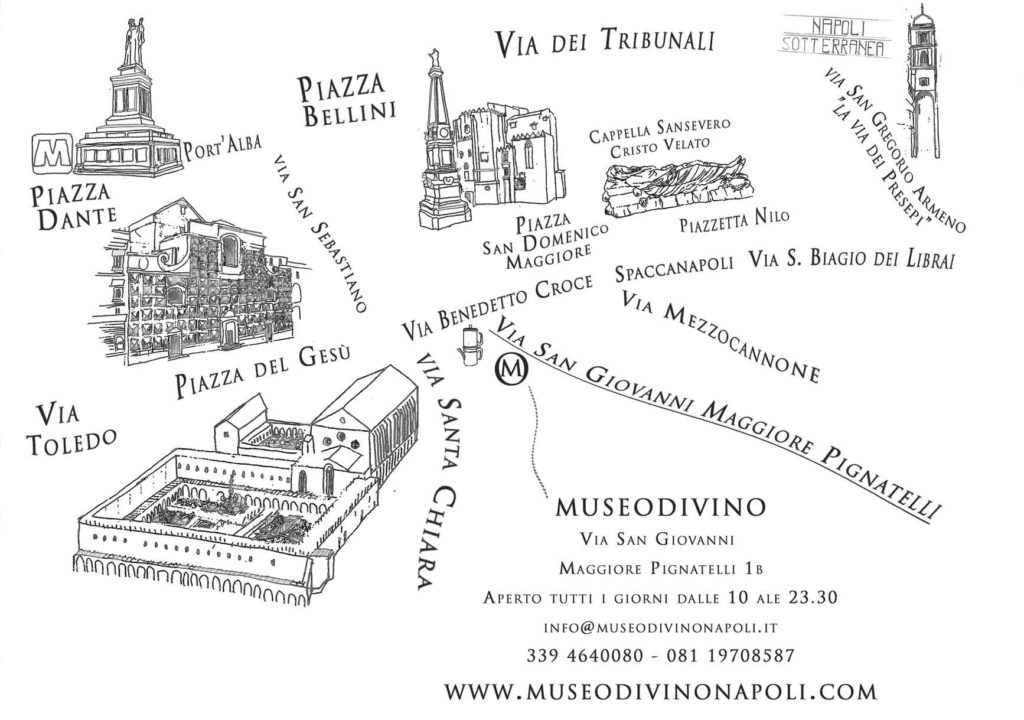
PRICES
Free entry with free donation
Guided tour: 4€
For groups and schools: +39.375.573.3967
VISITING HOURS
Everyday
from 11am to 4pm
